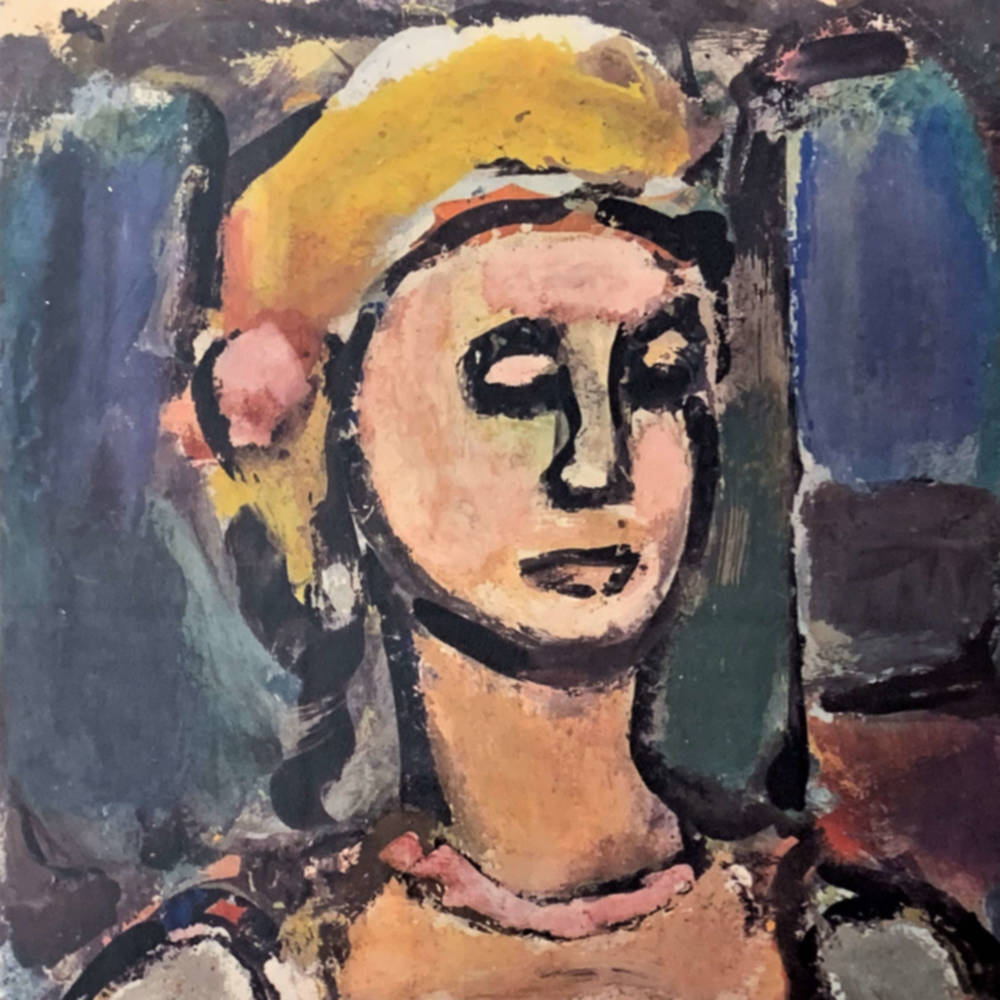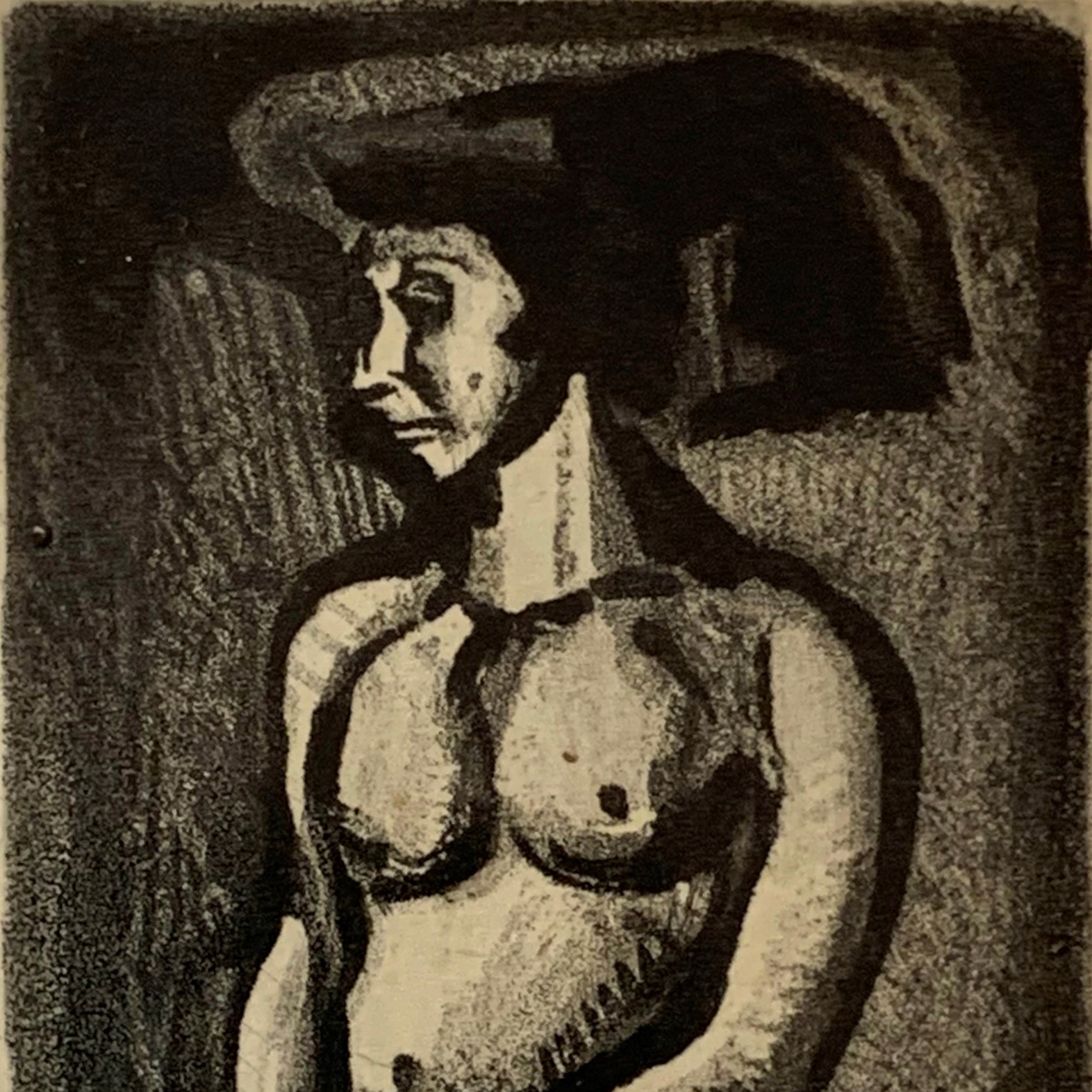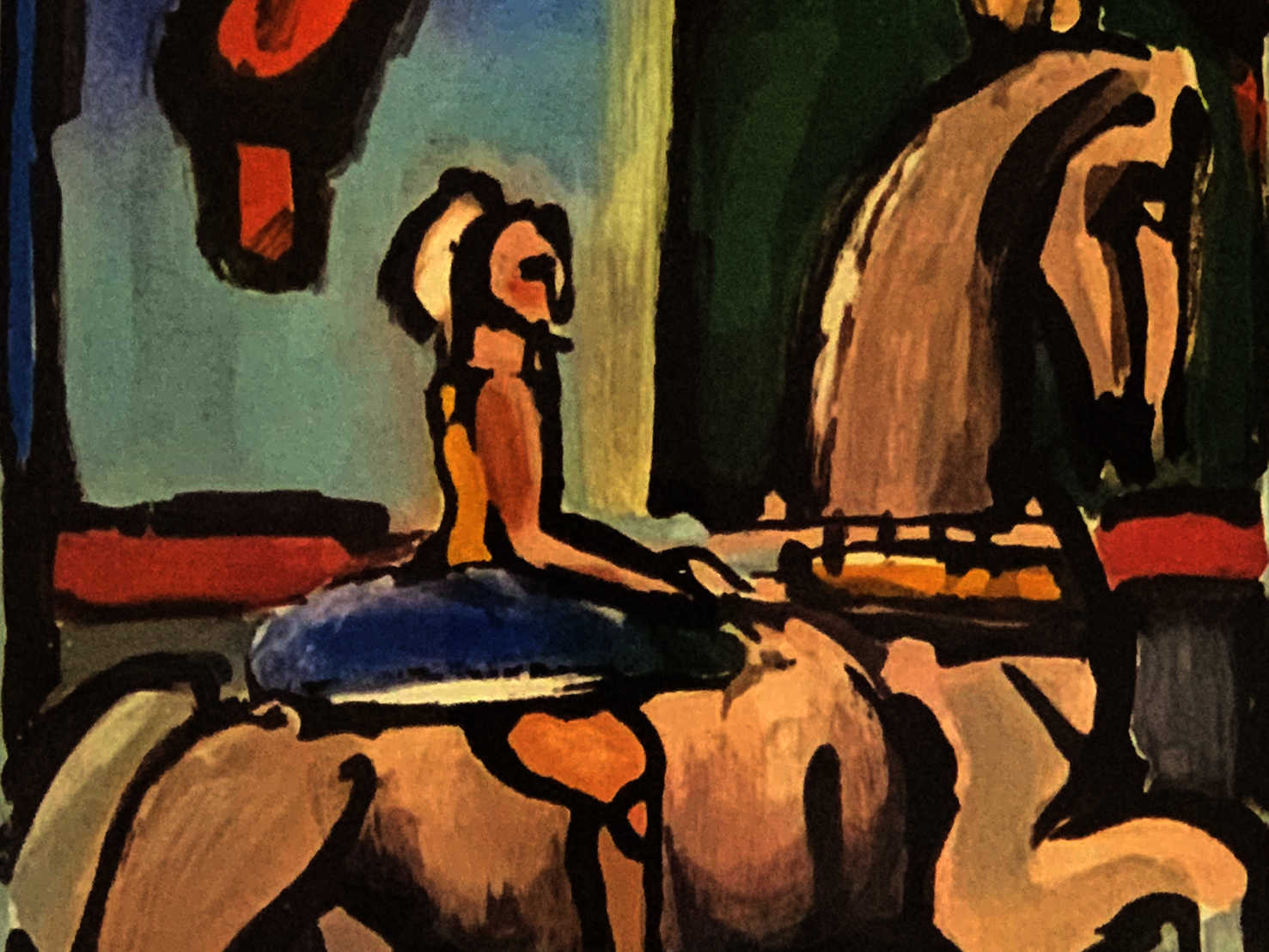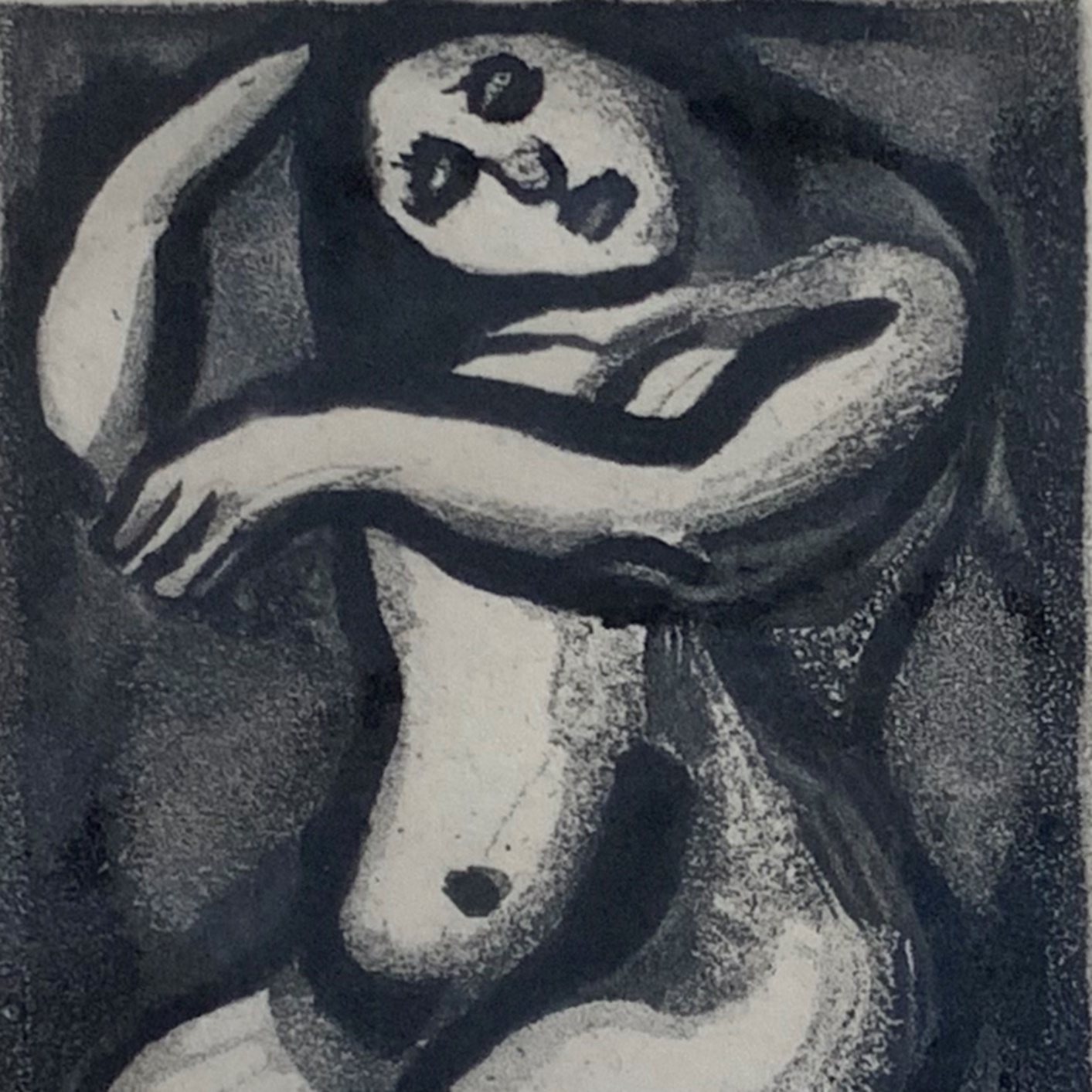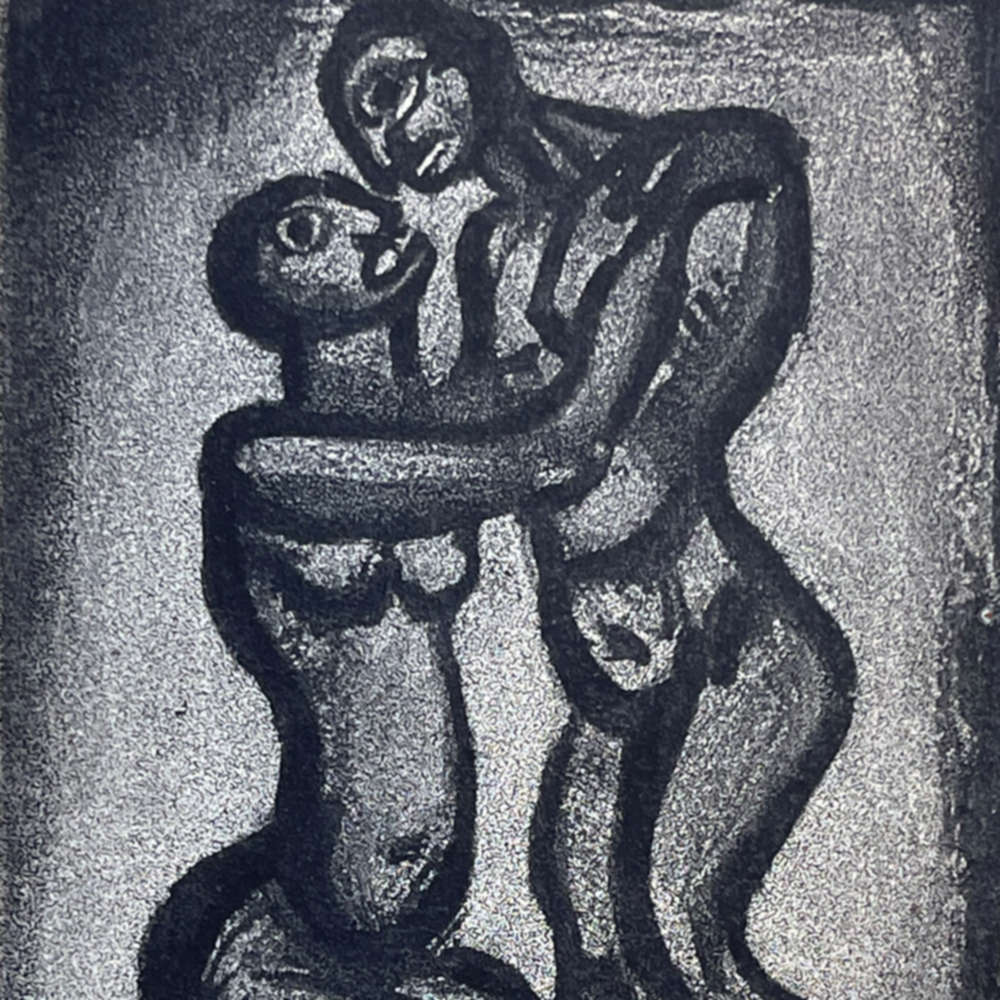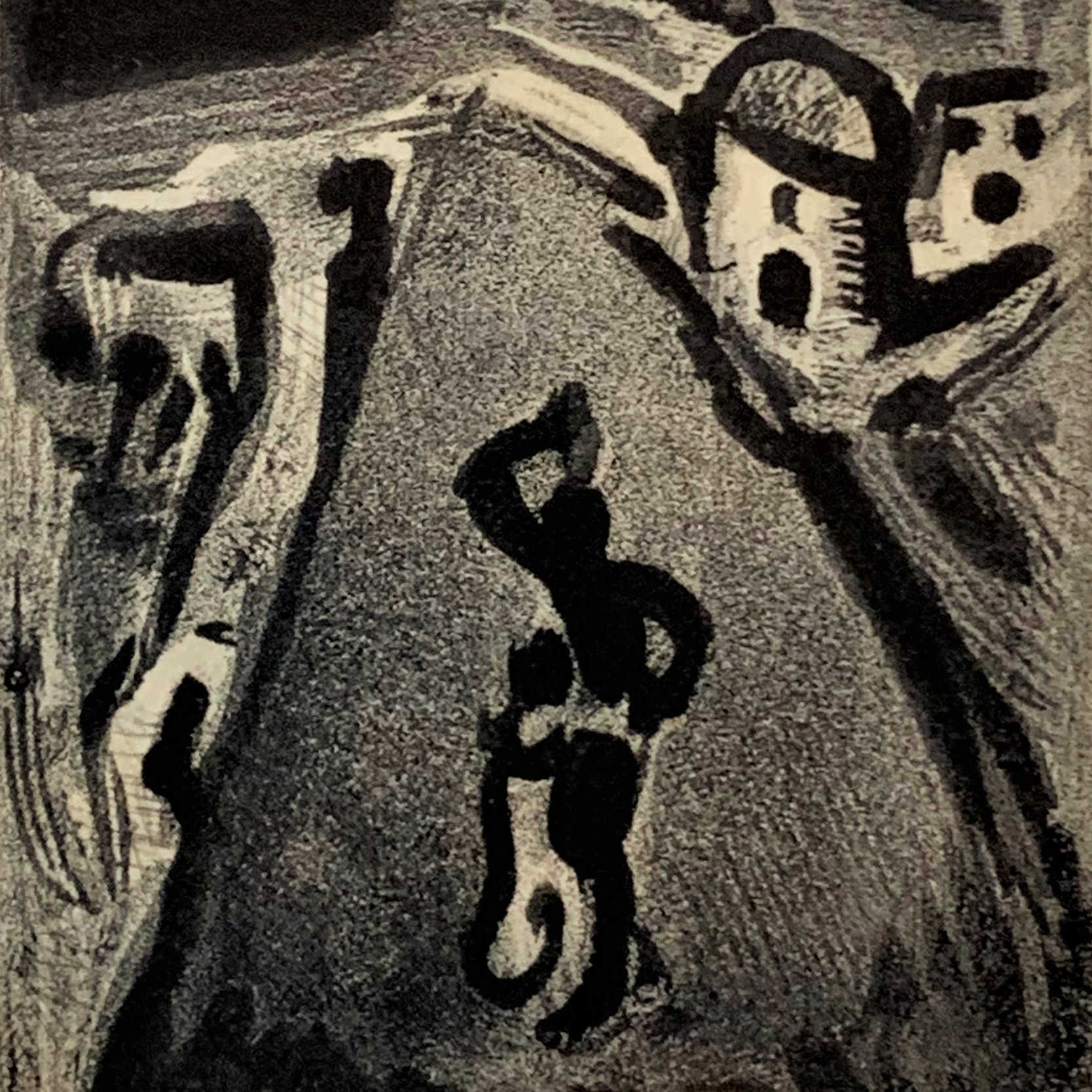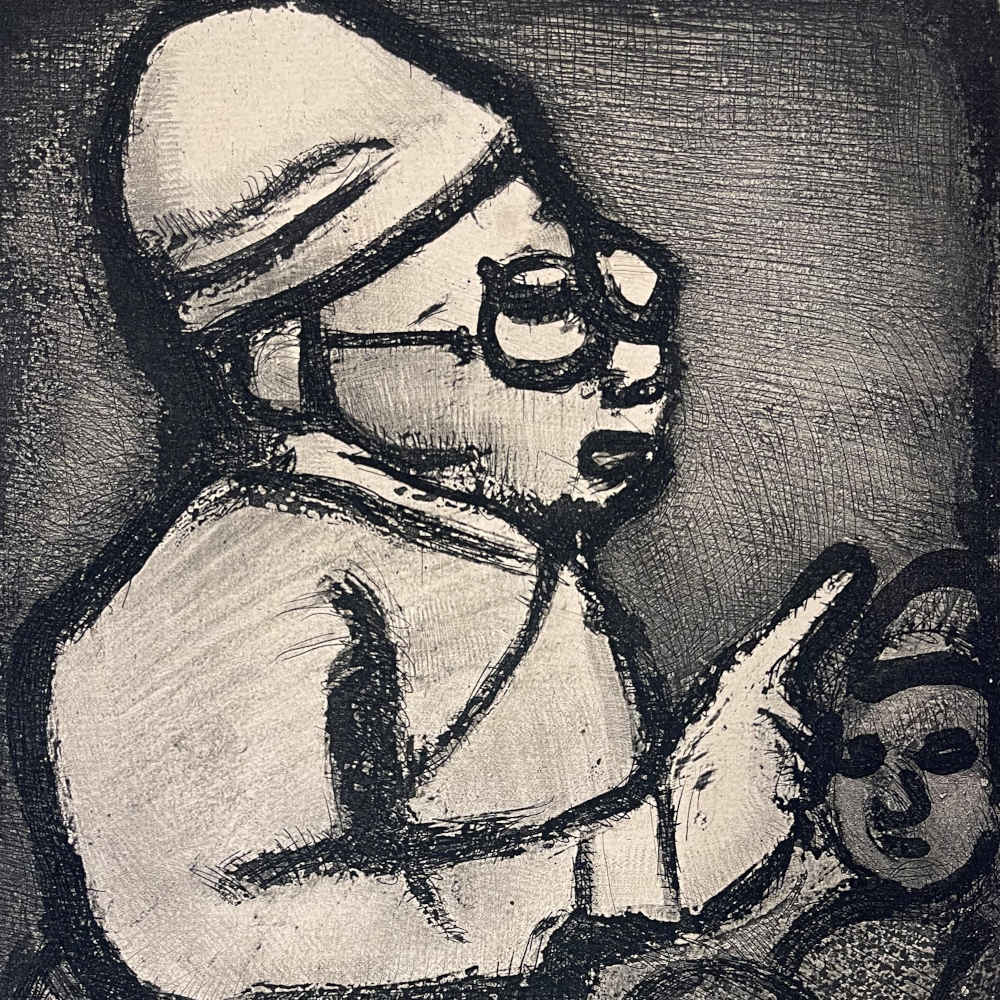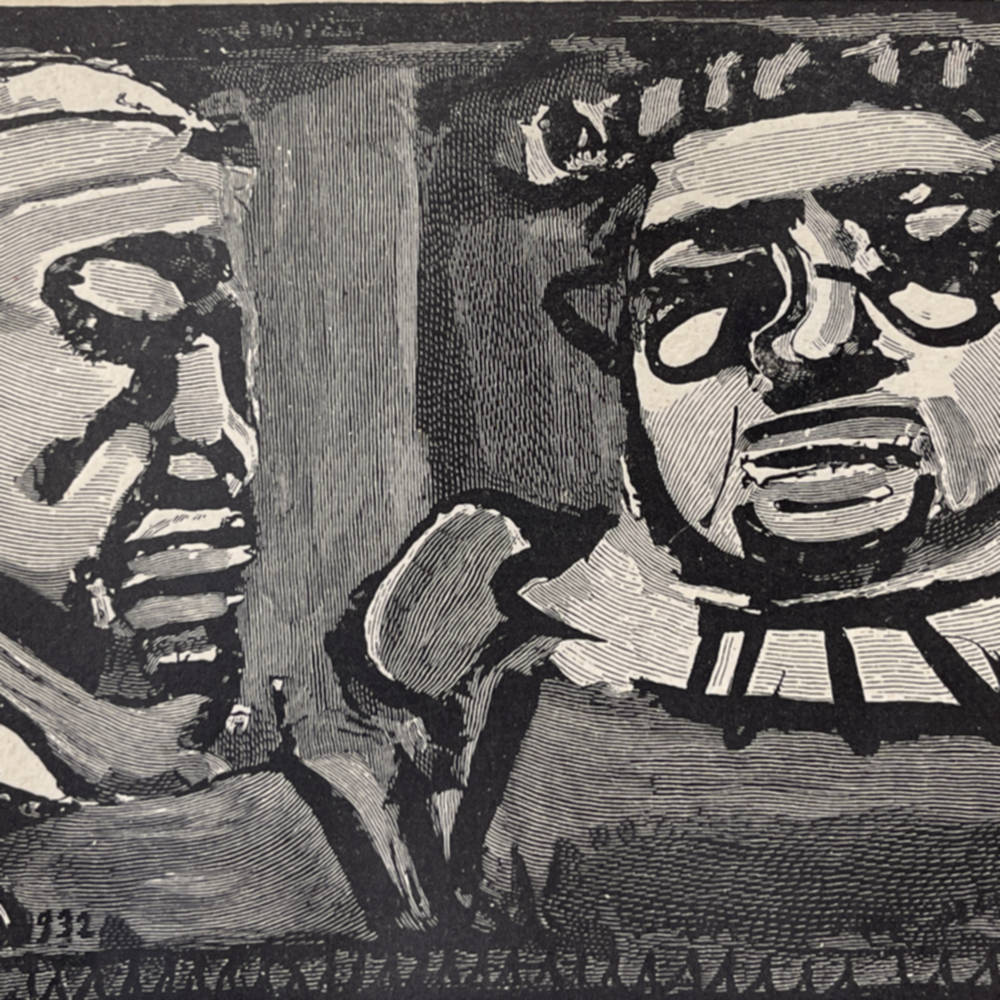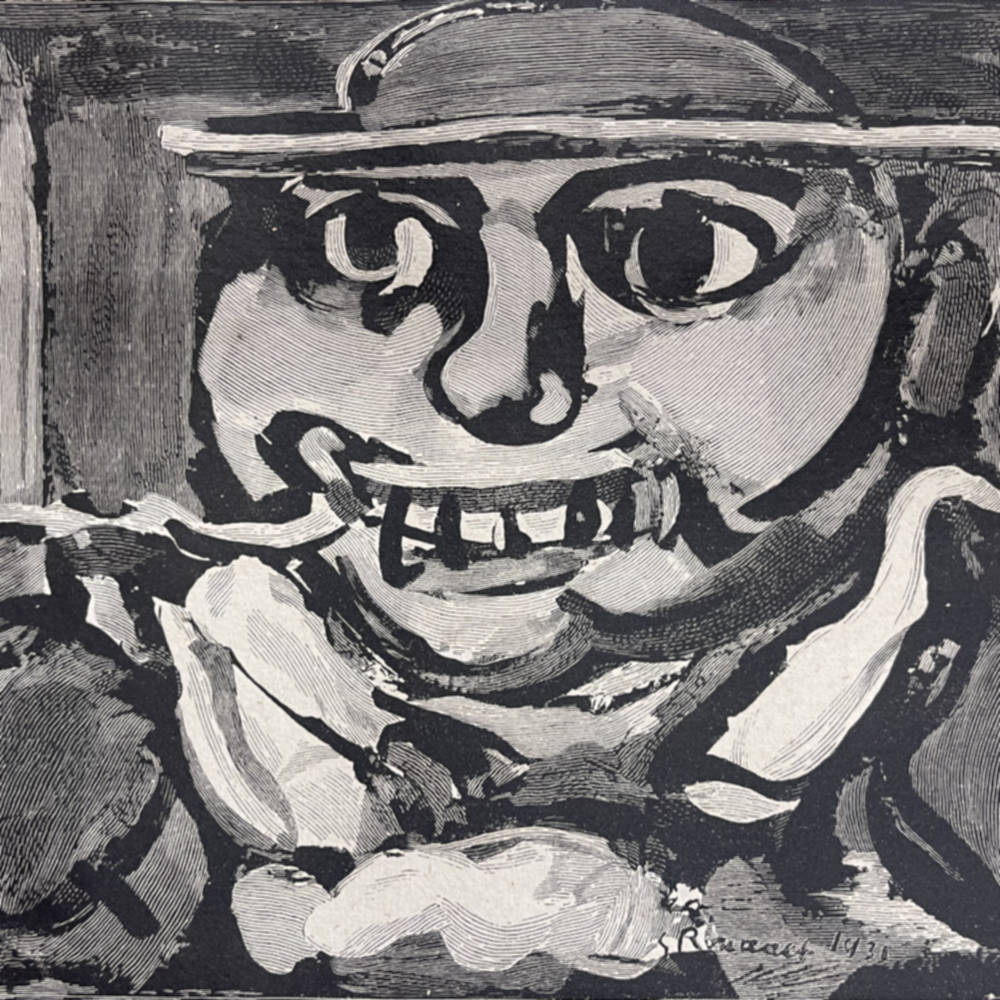Georges-Henri Rouault was an early Twentieth Century French painter and printmaker. His mother encouraged his love for the arts and Rouault apprenticed as a glass painter when he was 14 years old. It is impossible to see Rouault’s work without immediately recognizing its resemblance to the painted glass that marked the start of his artistic career. When he was twenty years old, Rouault enrolled in the École des Beaux-Arts, the official art school of France.
Later, Rouault met Henri Matisse and others of Matisse’s circle. With that introduction, he was also introduced to Fauvism; by 1905 he had an exhibition at the Salon d’Automne with the other Fauvists.
Like Philip Evergood and William Gropper, Rouault used his art to make social commentary. In 1907, he began to produce a series of paintings dedicated to courts, clowns, and prostitutes, expressing his moral and ethical beliefs. Over time, his work evolved further in that direction, focusing on religious and spiritual themes, sin and redemption.
Between World Wars I and II, at the instigation of the important Paris art dealer Ambroise Vollard, Rouault devoted himself to engravings. He created a magnificent set of works to illustrate Les Réincarnations du Père Ubu by Vollard, Le Cirque de l’étoile filante by Rouault himself, and other.
Works by Rouault are held in almost every important museum, including the National Gallery of Art, the Phillips Collection, the Carnegie Museum of Art in Pittsburgh, the Museum of Modern Art, the Musée d’Orsay in Paris, the National Galleries in Scotland, the Hermitage Museum in St. Petersburg, the Metropolitan Museum of Art, the Tate Gallery in London, and many others.
